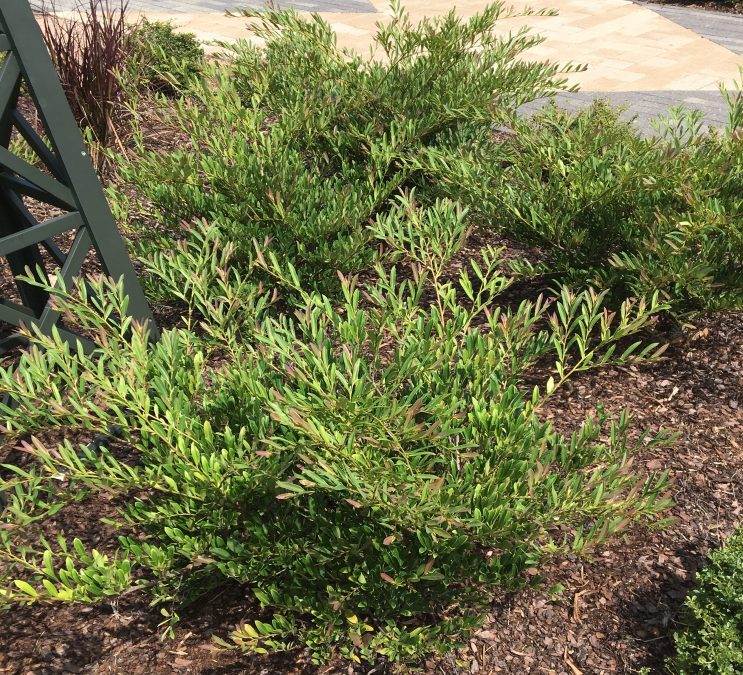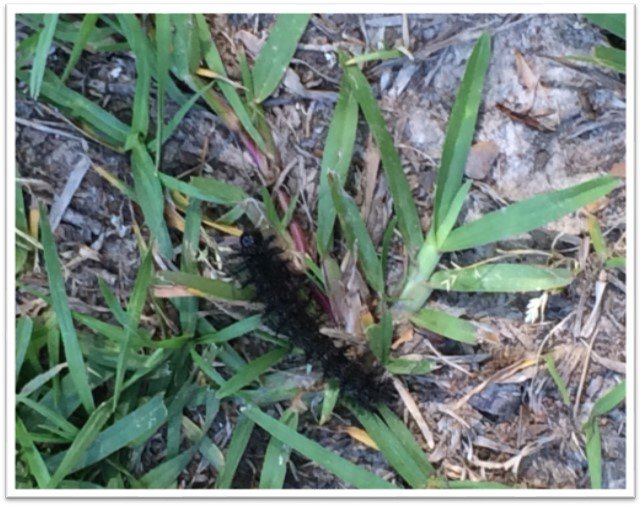
Christmas Eve house fire extinguished with no injuries
December 24, 2021
TPSO: Suspect wanted on Theft of Motor Vehicle
December 26, 2021By Heather Kirk-Ballard, LSU AgCenter Horticulturist
A foundation planting is the placement of plants in beds that frame the home — typically, along the front and back of the house and sometimes along each side. By creating beds along the walls or foundation of the house, you create a nice visual flow into the landscape to create curb appeal.
When designing the beds, be sure the highest point is closest to the house and slopes downward 6 inches for every 10 feet away from the house. That way, when it rains, water will drain into the lawn and toward street drains.
Landscape beds should be 6 to 9 feet wide from the home to the farthest edge of the bed to provide ample space for plants to grow without crowding the house. It is important to create beds large enough to leave some space next to the house so that roots from trees and larger shrubs will not interfere with any utilities, plumbing, air conditioning units, the foundation of the home or the roofline.
When planting, be sure to consider the mature size of the plants going in. Large shrubs should be planted 5 to 6 feet away from the house, while smaller ones should be planted at least 3 to 4 feet away. Another important tip is to keep mulch, especially wood mulches, 1 foot away from the foundation of the home to help prevent termite infestations. Fill that area with rock or crushed granite for a tidy look.
In general, shrubs make up the majority of the foundation planting. Add a tree or two, and the remainder of the mix should be annual and perennial bedding plants. Create a good balance of deciduous and evergreen materials. Keep in mind that if you use all deciduous selections, your landscape will look bare in the wintertime.
If you love flowers, consider the bloom time of each plant so the landscape will have a focal interest each season. There are plenty of plants to choose from that bloom in each season. Improved cultivars of many plant species that only bloomed in spring now have more than one bloom time, such as Encore azaleas and repeat-blooming roses.
A good rule of thumb is to make half of your plant selections evergreen, with one fourth flowering shrubs and trees and the other one fourth annual and perennial bedding plants. Be sure to include spring, summer, fall and winter blooming selections.
Avoid choosing plants that will grow and block windows. Choose shrubs with a maximum height of 2 to 4 feet to help prevent blocking the view of the windows. For the front of the home, choose dwarf evergreen blooming selections such ShiShi Gashira camellias, drift roses, Mrs. Schiller’s delight viburnum, dwarf varieties of encore azaleas, dwarf gardenia, glossy abelia, dwarf bottlebrush and improved varieties of Indian hawthorns.
Some great dwarf evergreen shrubs that do not bloom are Little Giant dwarf arborvitae, littleleaf boxwood, dwarf yaupon, dwarf junipers and dwarf distylium varieties Vintage Jade and Cinnamon Girl.
Tall flowering shrubs such as Japanese magnolias and camellias can be excellent choices for beds on either side of the house at the corners of the beds.
If you want your landscape to have a formal look, create symmetry at the focal point of the home: the front door. Use potted plants of equal size to the left and right of the front door to draw attention to the entrance of the home. Try ferns or create topiaries from hollies or boxwoods.
Landscapes help make your house a home, create curb appeal and add value to your home. If you keep wildlife in mind, you can also make selections that attract more than one type of visitor to your home.








